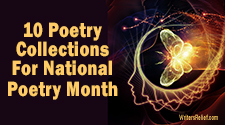
Updated May 2023
If you’ve been around long enough, you know that certain kinds of punctuation are trendy (hello, em dash!). And some are like the pets that you put in the backyard when company comes over (we’re looking at you, parentheses).
Dashes, commas, colons, and ellipses are often used to heighten drama in a sentence. But not always in a good way.
Let’s take a look at how each is properly used:
1. Comma. The most versatile of the marks is the comma. It wears many hats, but its two main functions are: (a) to set off nonessential expressions that interrupt the flow of thought and (b) to separate elements, thereby clarifying the relationship between them.
The comma is the most modest of the marks. It doesn’t draw undue attention to itself or to the material it sets off or separates. The comma is so common that usage examples would only elicit a chorus of “duhs.” Suffice it to say that as long as a comma doesn’t preempt a role specifically assigned to the colon, semicolon, or parentheses, it is generally the safe choice to set off information and separate elements. It might not be the flashiest choice, but it gets the job done.
2. Colon. The colon is straightforward in its application: It is used, as in this sentence, after an independent clause to (a) emphasize a word, phrase, or sentence which directly explains or illustrates the main clause or (b) introduce a list of items. Like an Army sergeant, the colon is focused and demanding. It calls out: Hey you—read this. Depending on its use, the first letter that follows the colon may or may not be capitalized. If either side of the colon can be its own sentence, the word after the colon is capitalized. If what follows after the colon is a list, then the words are lowercased.
3. Semicolon. The semicolon is arguably the only punctuation mark subject to long-running ridicule by the writing public. Kurt Vonnegut famously said the only reason to use one would be “to show you’ve been to college.”
Tsk-tsk, we beg to differ! It may be that the semicolon’s bad rap began with its naming. It should have been called the “semiperiod,” as it is used to join two independent clauses that could stand alone as sentences where either (a) a coordinating conjunction (and, but, or, etc.) or (b) a conjunctive adverb (however, therefore, etc.) has been omitted.
We like to think of the semicolon as providing a greater degree of intimacy and clarity, in the right circumstances, than would two distinct sentences. Consider this example: Susan loves pasta primavera; John does not. It is clear that John does not love pasta primavera. If the example is broken into two sentences, the expression becomes somewhat ambiguous: John does not—what?
4. Parentheses. Used to enclose explanatory material that is independent of the main thought of the sentence (that is, nonessential), parentheses can bracket a single word, a phrase, an entire sentence, a number, or a date (or just about anything else).
As with semicolons, they have their place, but overuse can imply mental laziness. Before using parentheses, it is wise to ask yourself if the material is important enough to be included without parentheses, and if it’s not, is it important enough to be added at all?
5. Em dash. Like parentheses, the em dash can set off nonessential elements; but it does the parentheses one better—it can also set off essential elements. Accordingly, the em dash, under the right circumstances, serves as an alternative to any of the other marks—the comma, colon, semicolon, and parentheses—as long as it is used sparingly and for special emphasis only.
6. Ellipses. It’s hard not to love an ellipsis. They’re so mysterious—the punctuation mark sitting at the bar with a dry martini and a secret past that everyone’s dying to know. An ellipsis is a slippery little devil, mostly used to mean, “Hey reader, you can guess where this is going, even though I’m not going to tell you…” When the ellipsis takes off its casual wear for a stint in a quoted sentence in a thesis or newspaper article, it means that material has been left out.
Deciding which mark to use
Is the pause you wish to create with a punctuation mark (and the information that will follow it) subject to the precise rules of the colon and semicolon? If so, use the appropriate one.
If not, ask yourself if the material to be added is essential or nonessential.
If essential, use the comma, or, if you really want to draw attention to it, use the more powerful em dash.
If nonessential, use the comma if you wish to discreetly add the information; parentheses if you wish to make it a bit more noticeable; and the em dash if you want to draw maximum attention.



















I love punctuation, this is so cool!
I’ll forever be faithful to Mr. Em dash; however, I’d be more than happy to be Mr. Ellipses’s mistress. 🙂
An ellipsis is a writer’s chance . . . to pause the thought while taking a deep breath. At least for me . . . well, let’s just say that I use it like an extra-long em dash.
I enjoy using ellipses to slow the flow of an article.
What of the N-dash? The other four are well defined, useful and often ignored even in published material. I wonder why . . .
Hi Antoinette,
The en dash isn’t used for creative ways. It’s used in connecting numbers in text, like:
I attended the Iowa Writers Workshops from 2000-2011.
The hyphen is used when you don’t have access to the en dash symbol.
It annoys me that many modern writers and publishers have decided to eliminate the comma from their writing.
@Sue Agreed!
I hate seeing the ellipsis in professional writing UNLESS it is used to signify information being left out. When I see it used to convey a pause, I scream a little in my head (never out loud, though).
If not ellipses to indicate a dramatic (or long) pause, then what? …
Frankly, in my opinion, English is loosing its colour and impact under the loving lashes of an all-embracing PC (punctuation-al Correctness). Is this being imposed on us by anally retentive grammar checkers, word processors … or by humans who have “studied the rules” for too long and too hard?
Personally I love using the ellipses to convey a long pause. I know that’s not its initial purpose, but is there a punctuation mark specifically for that purpose? If not, I think there should be. I see nothing wrong with braudening the use of the ellipses past its formally taught purpose. I mean language and writing evolves, that’s just how it works and many people use the ellipses for that purpose anyway, we might as well make it official. Just my opinion. I dunno.
Agreed…here, here! 🍻
Thanks that is unique
Good description of punctuation use. One minor correction:
If you use an n-dash between inclusive numbers, as in the example “from 2000-2011,” do not in fact use a “from”; if you use “from” then better to use “to” instead of an n-dash.
Style guides vary on this point about en dashes, but the Gregg Reference Manual does support you. Thanks for pointing this out.
I love punctuation!
An English professor wrote the words:
“A woman without her man is nothing”
on the chalkboard and asked his students to punctuate it correctly.
All of the males in the class wrote:
“A woman, without her man, is nothing.”
All the females in the class wrote:
“A woman: without her, man is nothing.”
Punctuation is powerful.
How does one indicate a dramatic pause (as if a dejected sigh) within a sentence? Many have claimed that ellipses are for obvious omissions, but… I don’t know… pauses are just as important.
Hello Edward,
The ellipsis serves more than one purpose. In quoted material, it indicates missing text. But in fiction, It can indicate a dramatic pause in a sentence/dialogue. Learn more here: https://writersrelief.com/blog/2013/04/harness-the-power-of-the-ellipsis/
What about this new trend of people using period for the purpose of pause. Example: “I. am. so. sick.”
I have been seeing this quite often lately. I do not like it — at all!
“Old school suggestion,” a comma suggests, a pause.
Agreed 100%
Hi! Really great article, I enjoyed reading it. It helped reaffirm fundamentals for me. 😃
I have a comment and a question.
Comment:
Hoping this is a secret Easter egg 🐣 you put in the article.
Maybe I’m mistaken but It seems you used a semicolon in a way that’s contrary to your description of it’s intended use.
Sentence: “Em dash. Like parentheses, the em dash can set off nonessential elements; but it does the parentheses one better—it can also set off essential elements.”
Question:
In the age of emojis, where do I put them in relation to all punctuation?
In particular quotation use, at varying points within a sentence.
Is this conversation happening somewhere? It may be time.
Thanks!
Phillip
In certain instances, when a conjunction (words like and, but and or) is used to merge two independent clauses into one sentence, it is possible to use a semicolon before the conjunction to outrank any commas ( or em dashes) in the clause. You may find this article about emojis helpful: https://www.grammarly.com/blog/emoji-grammar-guide/
I wrote the following sentence with a semicolon after the word helpful because I wanted to indicate a pause. Is this legitimate or would an em-dash have been more appropriate, or was I condemned to having no pause at all.
We think you’ll find this directory helpful; both in providing support for local organisations and helping recent arrivals discover activities rich in fun, interest and satisfaction.
Hi David,
We recommend checking the Chicago Manual of Style for a definitive answer.
Punctuations are very important while writing as it can mislead or confuse reader.
We ignore punctuation easily. But this article makes you understand its importance.
This was so helpful and well put. I was here writing up a blog post and this cleared up some difficulty I was having. Thank you!!
You’re welcome!